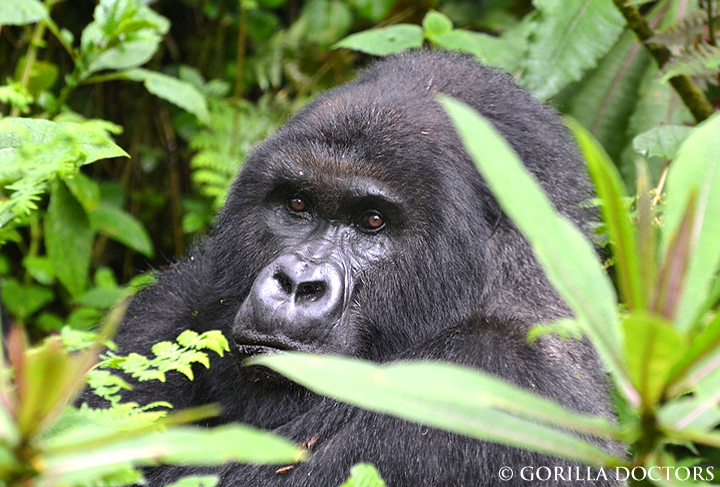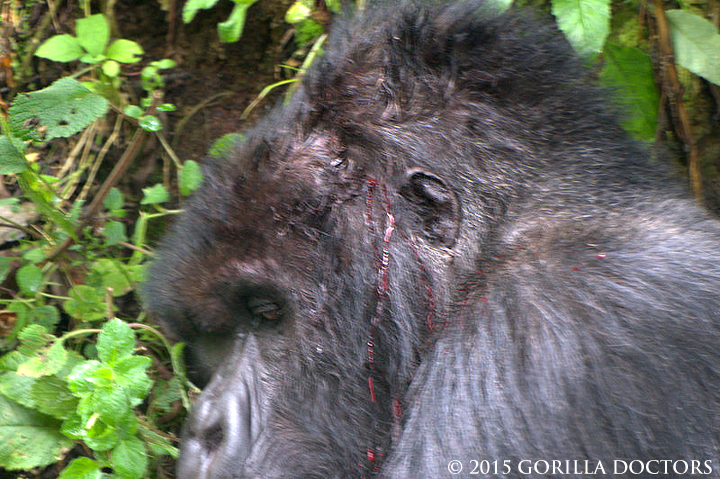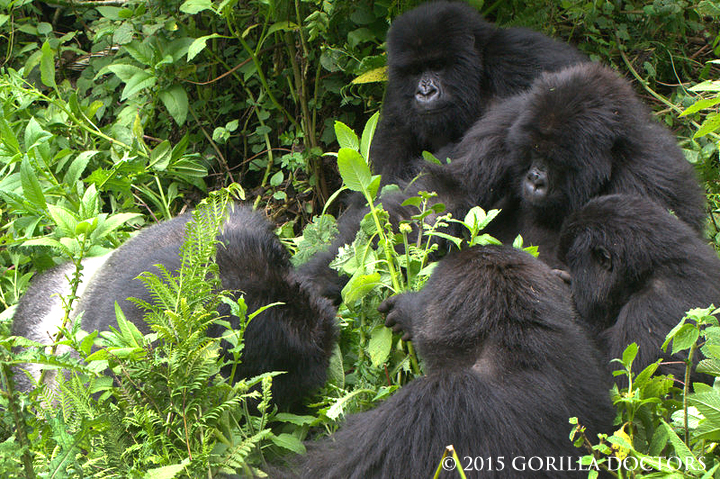Kuryama Group Leader Assessed for Bleeding
By Gorilla Doctors Staff on Wednesday, August 19th, 2015 in Blog.Kirahure, the 24-year-old dominant silverback of Kuryama group, was wounded after a suspected fight with beta silverback Vuba in late July. At the time, the wound was reported to Gorilla Doctors by the Fossey Fund’s Karisoke trackers (who regularly monitor Kuryama group) and the wound was minor and not in need of veterinary care. However, on August 3rd, Kirahure was observed bleeding from the cut just above his ear after juvenile Jyamubandi curiously poked the area while the group was resting. Gorilla Doctors Director Dr. Mike Cranfield, Rwanda Field Vet Dr. Jean Bosco Noheri (Dr. Noel) and RDB Veterinary Warden Elisabeth Nyirakaragire trekked to the group to assess the wound and found the silverback active and fully in charge of his group, but bleeding some above his left ear.
The following two days the bleeding was minor and inconsistent, however Kirahure was bleeding copious amounts of blood by day three and the vets returned, prepared for an intervention. It was a busy week for our Rwanda veterinarians as they were also intervening in Hirwa group to treat a respiratory disease outbreak. To make things worse, lone silverback Inshuti was also spotted in the area and, in his injured state, Kirahure may not have been strong enough to protect his group.
When Dr. Noel and Elisabeth arrived to Kuryama group on the morning of August 7, they found Kirahure lying on his left side, approximately 8 meters from his night nest. The group was feeding around him and he was responding to group vocalizations. There was no sign of blood in his night nest nor on the trail. He looked a bit lethargic and appeared to be in some pain, but was alert and responsive and feeding. The bleeding started again after 1 hour of observation when Jyamubandi touched the wound three times. Fortunately, the bleeding stopped after 10 minutes. According to Dr. Noel, the (suspected) bite wound above Kirahure’s left ear may have punctured an artery, causing spontaneous bleeding.
If the juvenile will leave the wound alone, it should heal without intervention. However, Kirahure will be monitored closely as it could become life-threatening and require veterinary treatment in which case Dr. Noel will anesthetize the silverback, clean and stitch the wound, and administer medications and fluids. Because a medical intervention on the leader of the group can be very stressful for all of the group members, we hope that Kirahure’s wound will heal without the need for veterinary care.


 Donate
Donate


